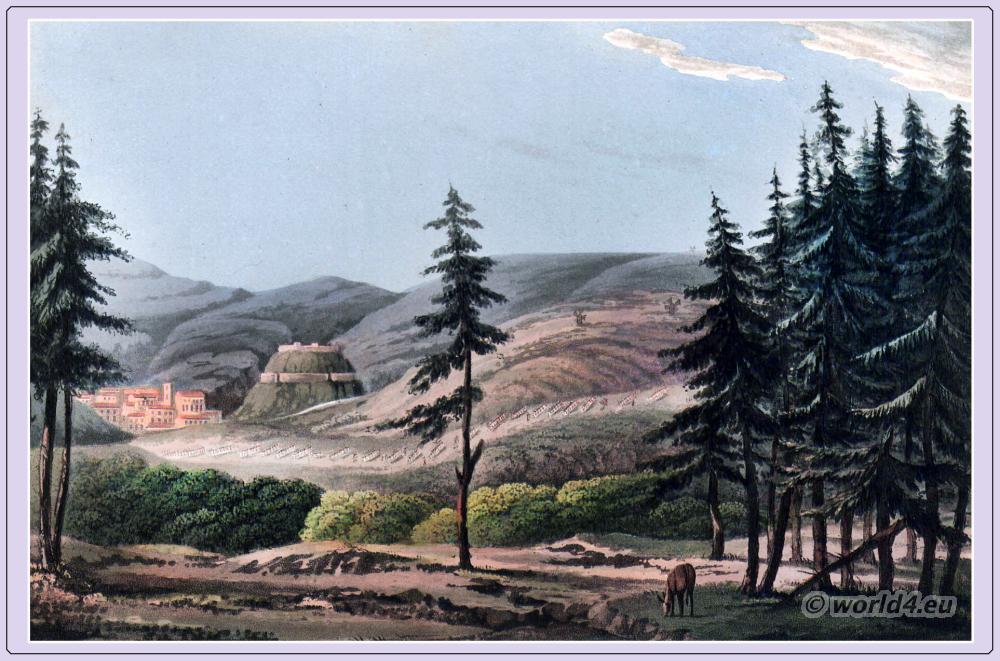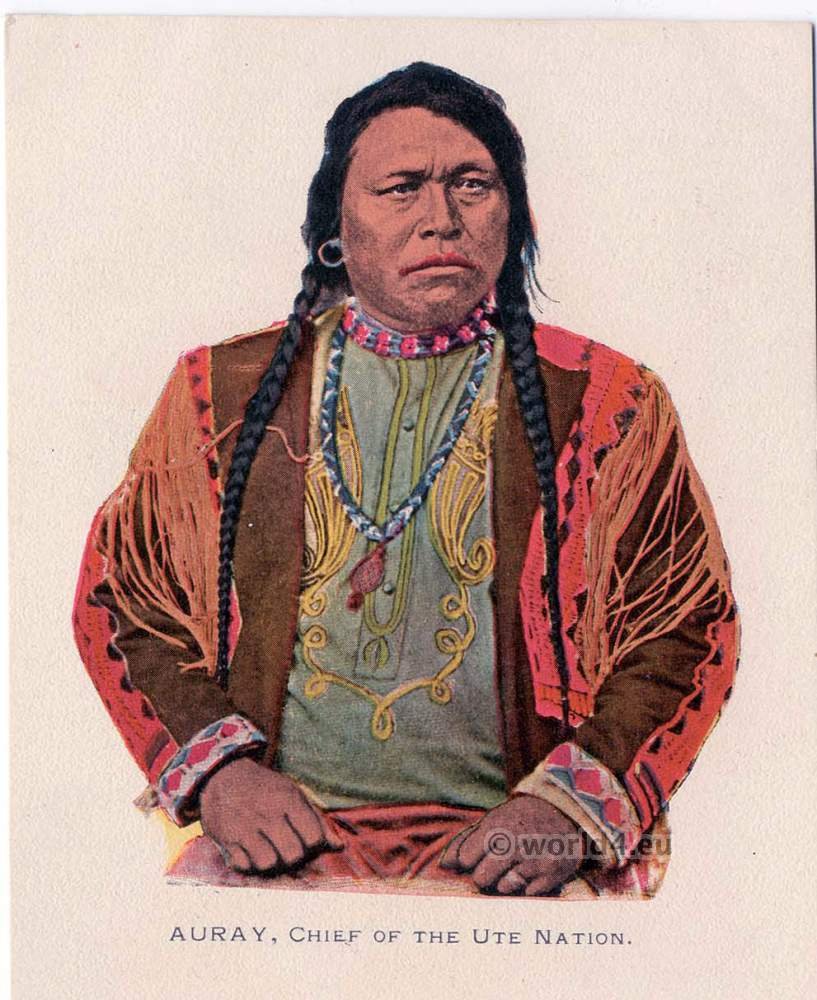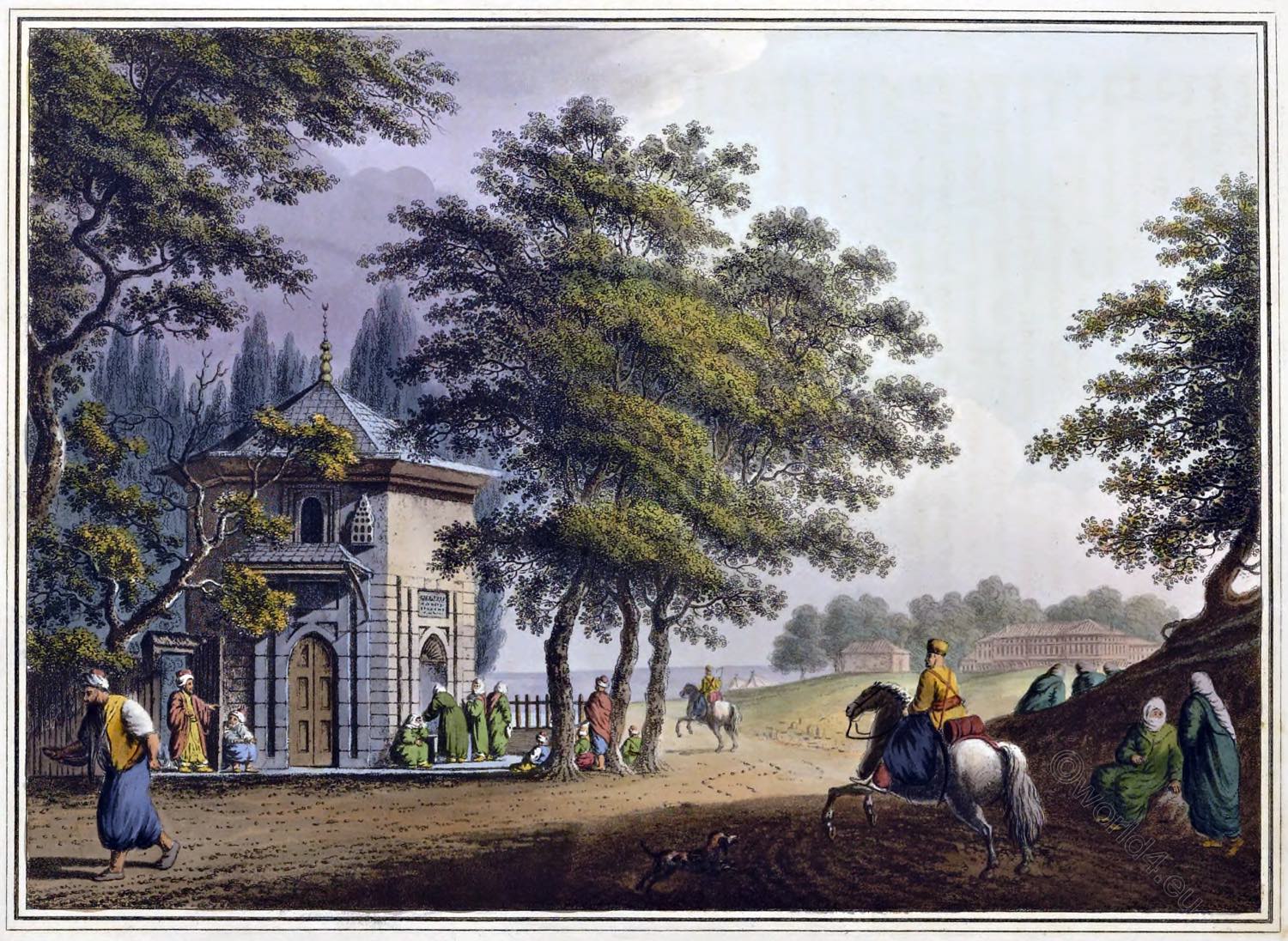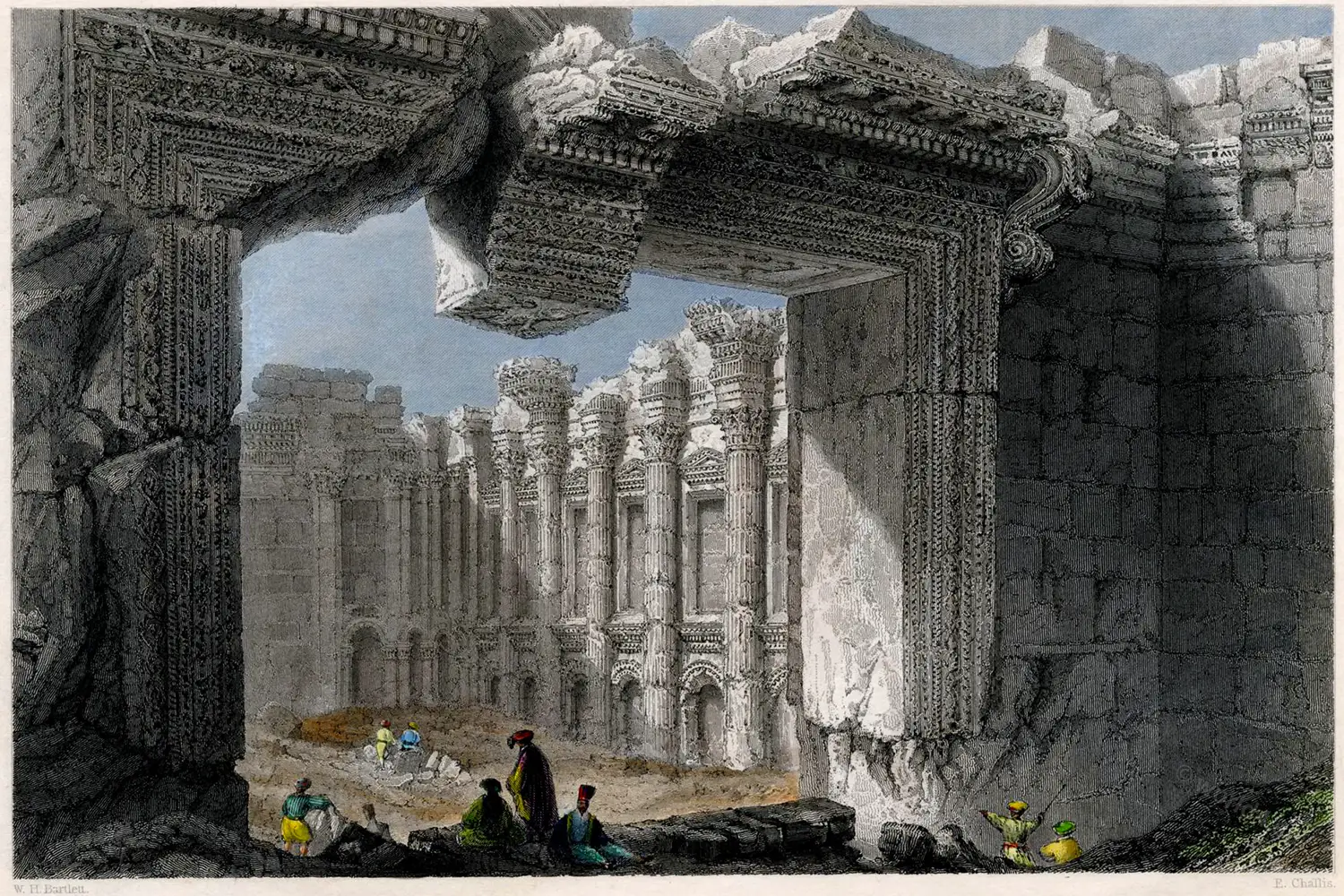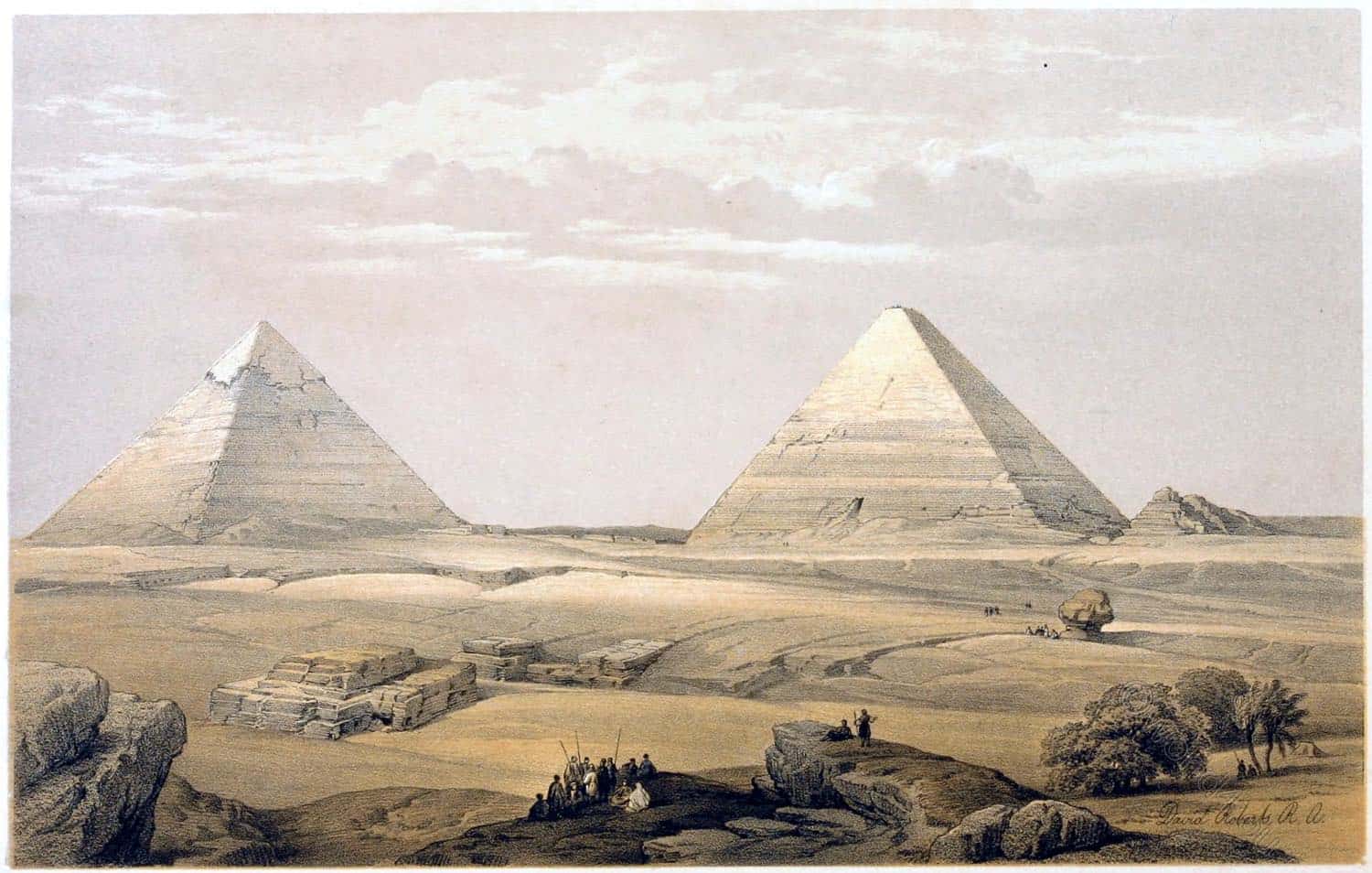
The Pyramids of Giza. The Great Pyramid of Cheops. Pyramids of the pharaohs Khafre and Mykerinos.
The Cheops Pyramid is the oldest and largest of the three pyramids of Giza and is therefore also called the “Great Pyramid”. The tallest pyramid in the world was built as a tomb for the Egyptian king (pharaoh) Cheops (ancient Egyptian: Khufu), who ruled during the 4th Dynasty in the Old Kingdom (about 2620 to 2580 BC).
Together with the neighbouring pyramids of the pharaohs Khafre and Mykerinos, it is the only one of the Seven Wonders of the Ancient World that has survived to this day. Cheops did not choose the royal necropolis of Dahshur as the building site, like his predecessor Snofru, but the Giza plateau.
PYRAMIDS OF GIZA.
This view is taken from a high rocky ground, above a fountain, where there are some sycamore and palm-trees, and looking nearly due north-west towards the Great Pyramid, that of Cheops, on the right.
The table-land (of rather soft limestone rock) upon which these marvelous structures are raised, has an average level of about 150 feet above the valley of the Nile. This rock is their foundation: within it and beneath the Pyramids are excavated deep and extensive passages and chambers. Such excavations are found under both the Great Pyramids; that on the left being known as the Second Pyramid, or the Pyramid of Cephrenes: but the excavations are deeper and more extensive beneath that of Cheops.
The whole surface is also excavated wherever a side is presented from ledge to ledge in the stratified structure of the rock: where the tombs of thousands of the ancient inhabitants of Memphis are seen in every direction. A large mass of ruined structure near the foreground on the left, was probably the commencement of another pyramid. The Sphinx, raising its head above this rocky solitude, was cut out of a large projecting and isolated mass of the same rock.
The entrance to the Pyramid of Cheops lies on the northern or opposite side to the spectator, though an opening, a false one, appears on the southern in this view: this Pyramid is now truncated, and some vast blocks lie on its summit in confusion. The Pyramid of Cephrenes is complete to its apex: it was covered with casing-stones, many of them at the top are still in situ, and from the smooth surface which they present make access to its summit a perilous adventure, but an Arab may always be found to exhibit his temerity and sure-footedness by ascending to this point for a dollar.
So enormous is the mass of the Great Pyramid, that it is estimated to contain 6,000,000 tons of stone. Its base is 746 feet, and its height is even now nearly 120 feet higher than St. Paul’s. Herodotus informs us that 100,000 men were employed twenty years in its erection.
The researches which have been made by Col. Vyse, with the aid of Mr. Pering, and the results which have been published in Col. Vyse’s splendid work on the Pyramids of Gizeh, can only be appreciated by reference to that work itself. All the Pyramids were examined by them. That they were tombs, and tombs only, has been fully proved by these researches. Sarcophagi have been found in the three great Pyramids of Giza; in the Third, known as the Pyramid of Mycerinus, a coffin was discovered, and on its wooden lid the prenomen of the monarch by whom the Pyramid was erected: and in the great Pyramid the cartouche has been found of Cheops, or Suphis, its founder.
But these discoveries have not settled the question, When were these Pyramids erected? Wilkinson has powerfully advocated their very high antiquity, and carries them back to the twenty-second century before the Christian era. But Wathen, who has brought much ingenuity to the investigation of the subject, has arrived at the conclusion that they are not earlier than the tenth century before Christ. The difficulty lies in chronologically placing the Pharaohs, Suphis, and Cephrenes, in a satisfactory order of succession in the confused dynasties of Egypt. There is little probability that further discovery will clear up this mystery: but it is interesting to know that, though we cannot to a certainty give an accurate date to the lives of the founders of these Pyramids, we have been enabled, by the recent discovery of the power to read the hieroglyphics, to confirm tradition and history in the accuracy of their names.
Roberts’s Journal. Wilkinson’s Egypt. Wathen’s Arts and Antiquities of Egypt.
Source: The Holy Land, Syria, Idumea, Arabia, Egypt, & Nubia, by David Roberts, George Croly, William Brockedon. London: Lithographed, printed and published by Day & Son, lithographers to the Queen. Cate Street, Lincoln’s Inn Fields, 1855.
Related
Discover more from World4 Costume Culture History
Subscribe to get the latest posts sent to your email.

